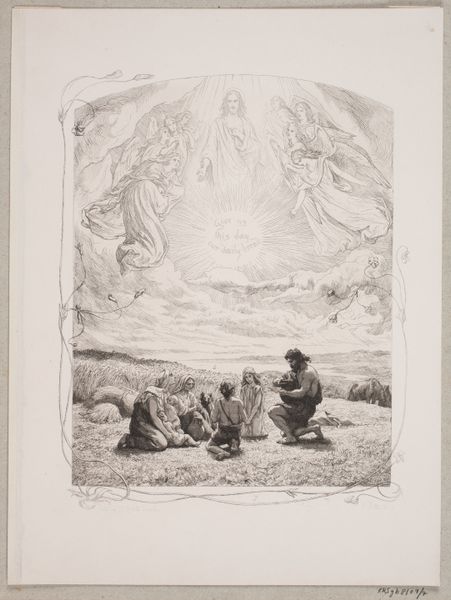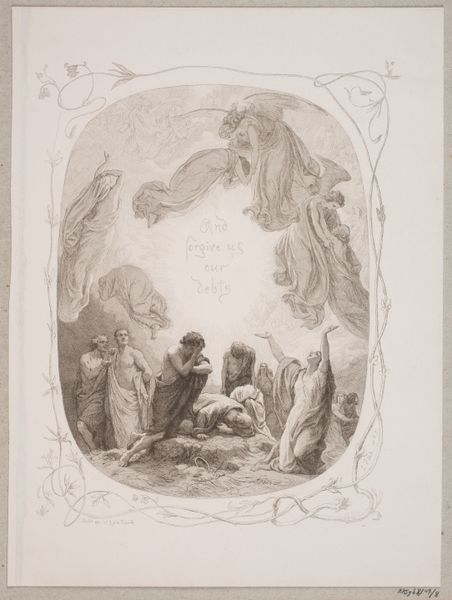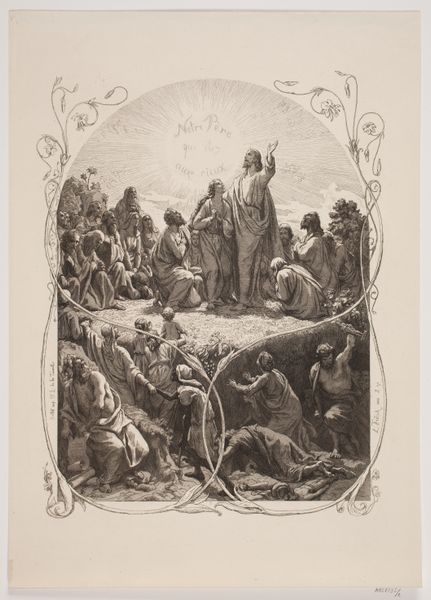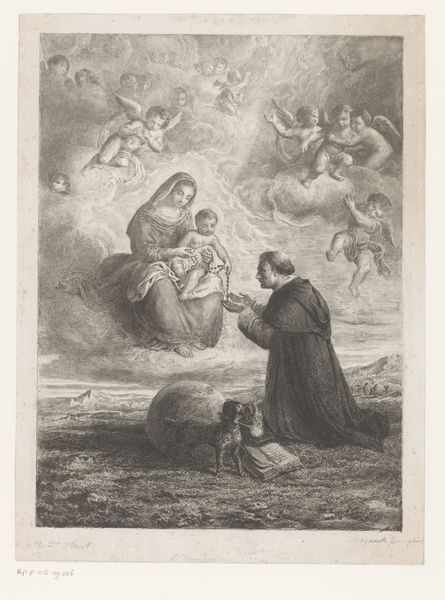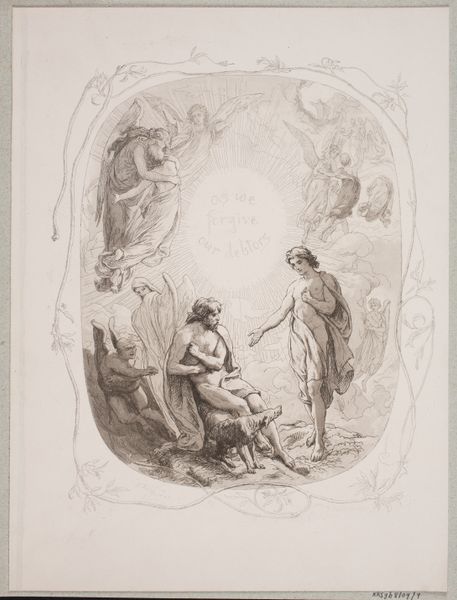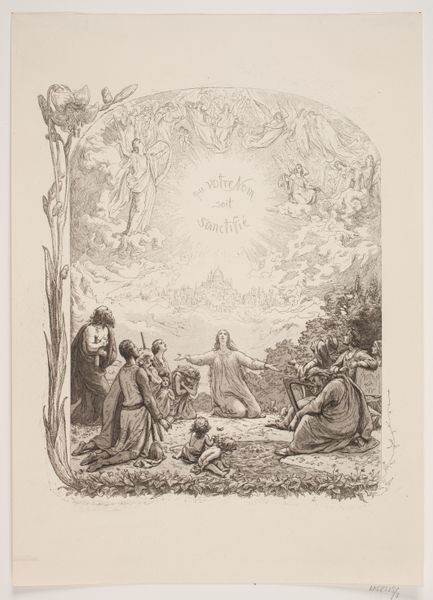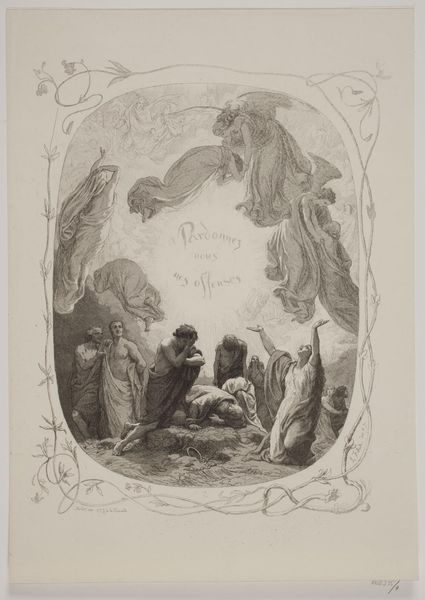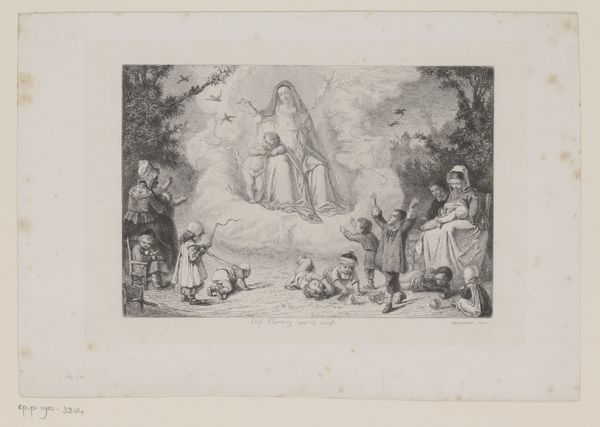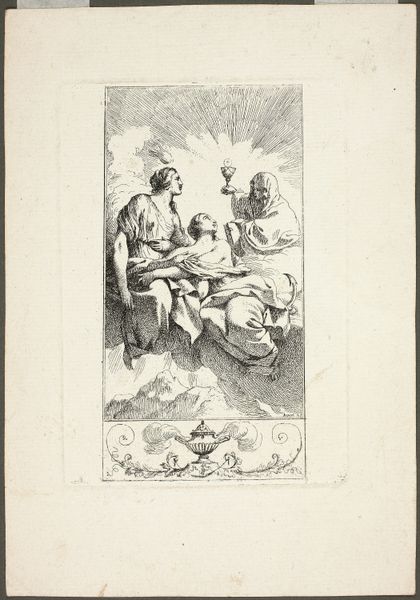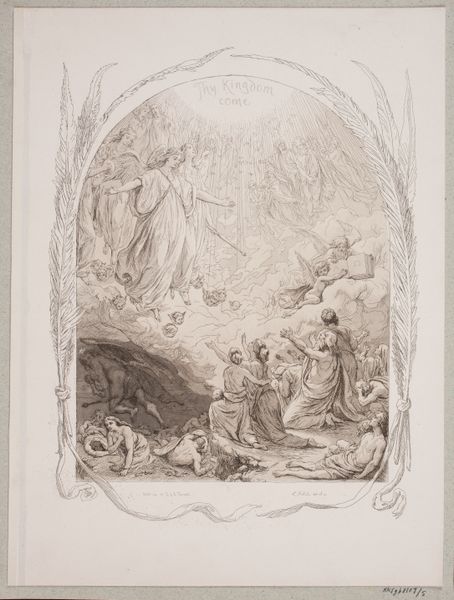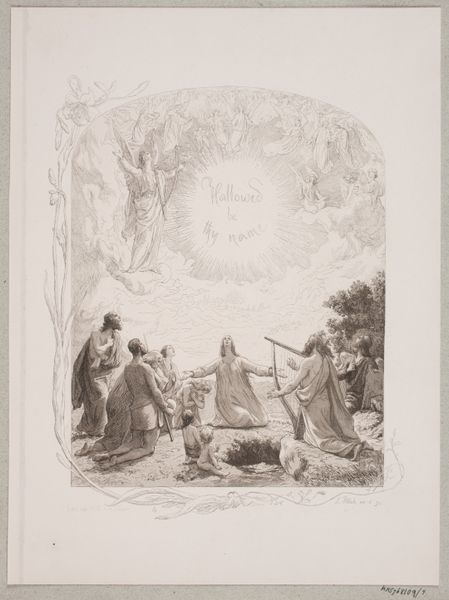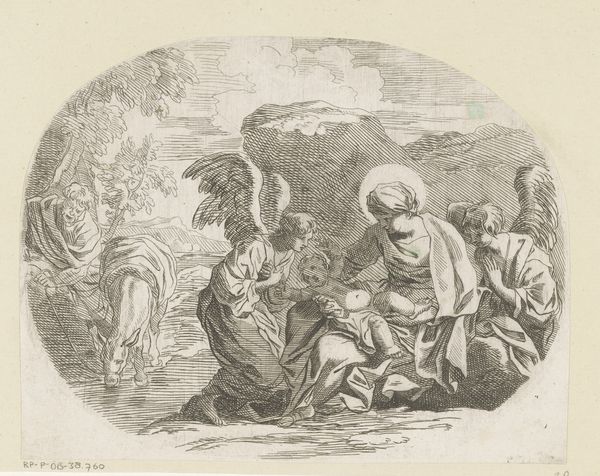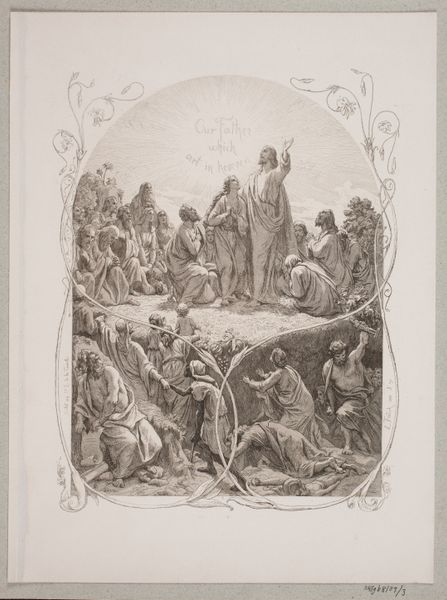
Dimensions: 306 mm (height) x 220 mm (width) (bladmaal)
Curator: It’s interesting how the seemingly simple medium of pencil, something readily accessible, is used to depict such a lofty religious subject. What do you think of Lorenz Frølich's “Illustration til 'L'Oraison Dominicale'” from 1863? Editor: It's stunning! The ethereal quality of the figures above juxtaposed with the grounded depiction of the kneeling figures below creates such a powerful scene. The medium looks to be a print, maybe an engraving of some sort? What strikes you about this work? Curator: Well, I immediately consider the availability and function of such prints during this period. This piece, as an illustration, was likely destined for mass consumption. How does that influence our understanding of its message? Was this readily available? Did many people engage with Frølich’s rendering of The Lord's Prayer, bringing spiritual imagery into ordinary homes? Editor: That's fascinating. Thinking about it as a mass-produced image changes my perspective. Instead of viewing it as a singular, precious artwork, I need to consider the social impact of reproducing this image in 1863. Does the pencil work become less significant since it was mechanically reproduced? Curator: Not at all! I see the drawing, specifically its linear quality achieved through pencil, as key. This allows for clean, repeatable lines that were essential for the engraving process and its subsequent widespread distribution. In fact, Frølich highlights the pencil-like work on the borders, which would be reproduced identically, creating a sense of craft that masks its mechanical processes. To what degree do we prioritize individual work by Frölich versus the artisans who helped him reproduce the work? Where is value located in an era of increasingly accessible reproduction? Editor: Wow, I never thought about the labor and collaborative aspect of prints like this. The means of production directly affects our reading of the piece, impacting consumption and access in 19th century Denmark. Thank you! Curator: Absolutely. Examining the labor and context reveals so much!
Comments
No comments
Be the first to comment and join the conversation on the ultimate creative platform.
